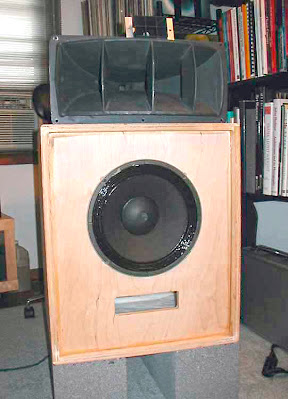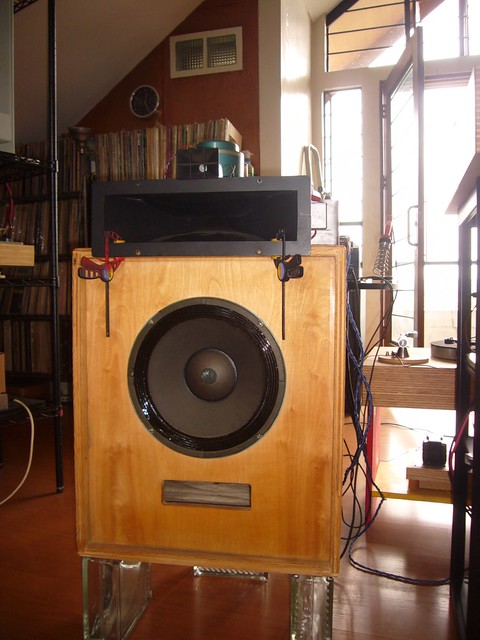It's been many years since I listened to 2 cubic foot slanted front boxes loaded with 755s. The 755E was chosen because I have had the least flying hours with them. In the past I used either Altec 3000H or Fostex FT17H to fill in the extreme top end on the 755C and 755E. But the FT17H has been gone in a trade for quite some time.
While browsing my favorite local electronic parts supply store, I found this pair of plastic horns for a little less than $20/pair. With specs and a price like that it would be worth the fun playing with them had they turned out to be duds.
The model number and trademark printed on the box don't exactly match what are stamped on the unit itself. Back in the 70s-80s, Micro was a 100% Philippine manufacturer of speakers and drivers. It doesn't seem to be that way anymore ;( I am guessing the "K" = Konzert, and "PT-6"A is an allusion to the vintage
Pioneer PT-6 from the 60s from which, I speculate, this unit was inspired (or cloned).
Mylar, phenolic or?
I was tempted to open a unit just to see what was inside and in particular, what material was used for the diaphragm. Unlike compression drivers which have field replaceable diaphragms, vintage horn tweeters can be very tricky, if not impossible, to reassemble without the proper jig and tools. I returned to the store a few weeks later and found out that there were no more PT-6As in stock. So I decided not proceed with exploring the innards of this horn tweeter.
Even if there were no reference points for the claimed 94dB sensitivity, to my ears it was pretty much within ballpark of 1 meter/1W because it did not require much attenuation used above the 755E. A 1 uf paper in oil cap in series gave the most subtle blend between the PT-6A and the 755E.
Comparing the PT-6A head to head with the Altec 3000H is pretty much an exercise in futility. The 3000H is a
very tough act to follow. Instead I will report more on the fun factor I derive from the PT-6A coupled with my distant memory of the
FT17H as super tweeter for the 755C and E.
The PT-6A performed well beyond my expectations. Just like the Fostex FT17H, it aided the drooping high frequency response of the 755E without deleterious effects on the midrange performance for which the 755 series is known for. Perhaps it is a tad less extended in the extreme top end than the Fostex but there were no nasty spikes to be heard. I doubt if I can find a better performing super tweeter for the 755E at this price range ;)









